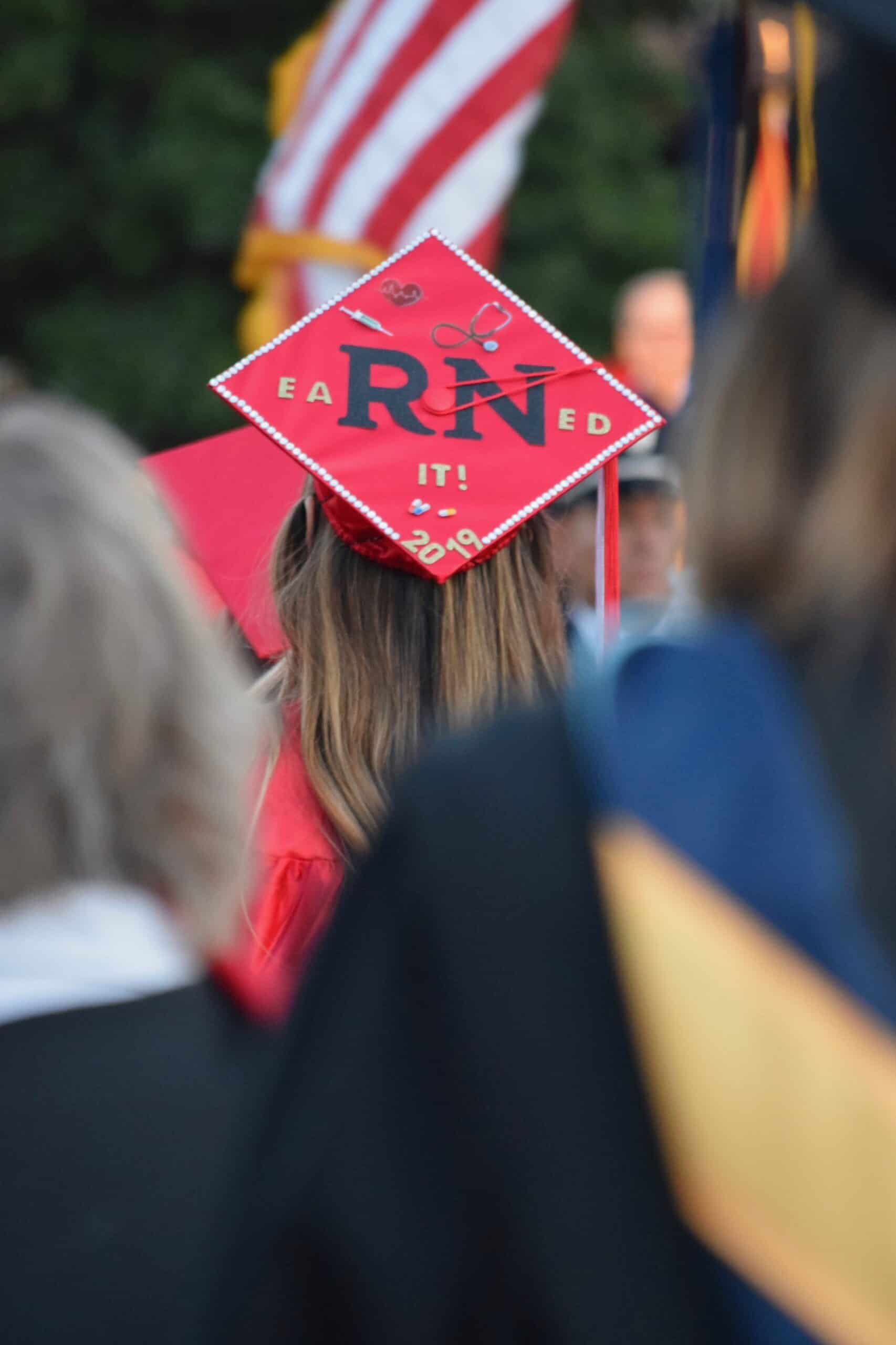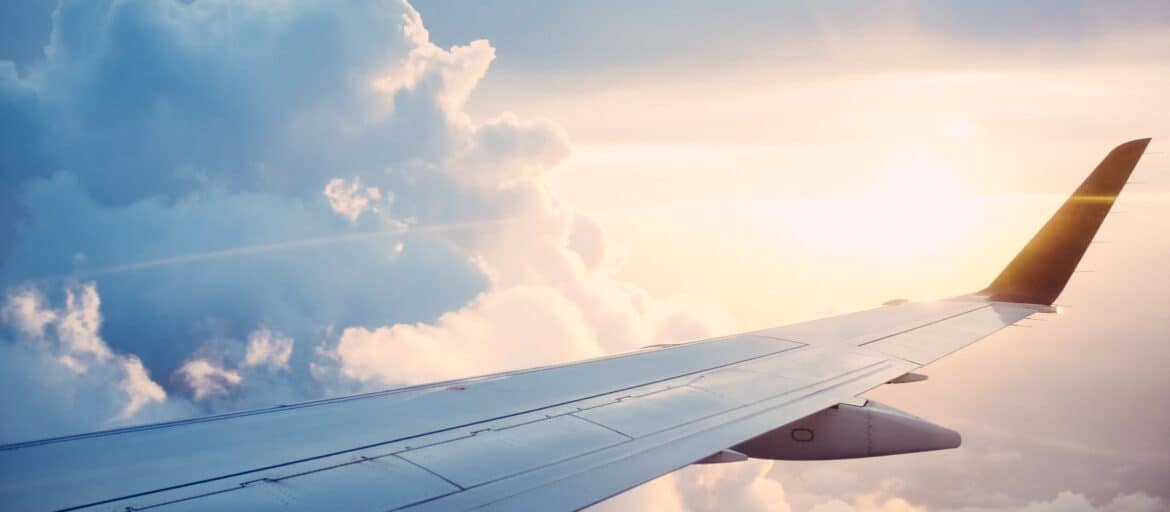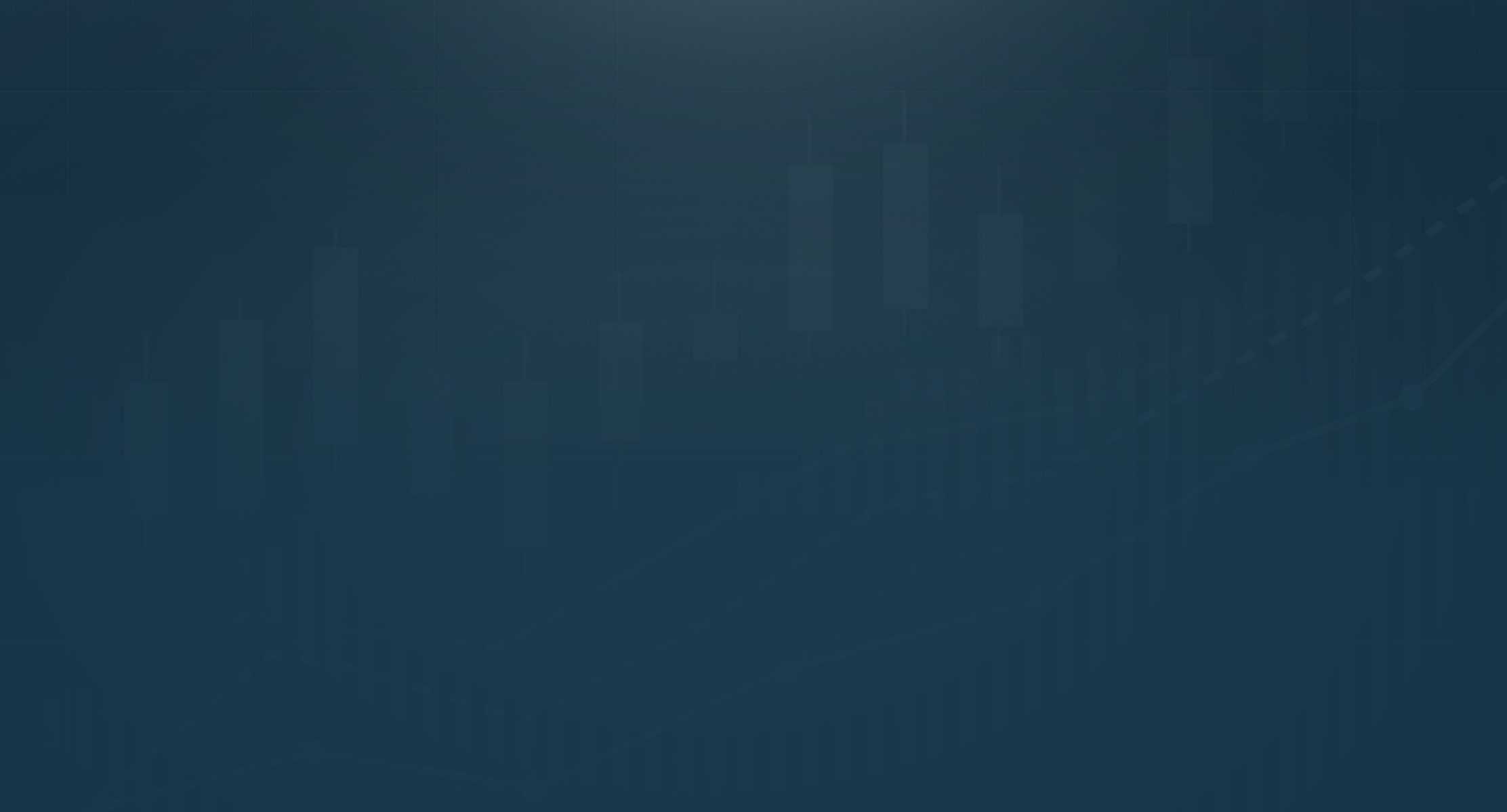Joe Biden’s Student Loan Relief Program: Everything You Should Know!
Written by Talaat & Tai on September 26

Student loan forgiveness might seem too good to be true, but it’s now a reality for many borrowers. Due to President Joe Biden’s administration and their new student loan relief program, you may qualify for up to $20,000 in federal student loan forgiveness. But you shouldn’t wait, as this is currently a one-time program that will expire on December 31, 2023!
Here’s what you need to know about the latest federal student loan relief program and how you can work towards getting your student loans forgiven.
Is the student loan relief program real?
Yes. In fact, there are multiple student loan relief program options out there. However, the main one we will cover in this article is Joe Biden’s new ‘Student Debt Relief Plan.’ But it’s important to know that you may have multiple forgiveness options at your disposal, especially if you fall under their guidelines and eligibility requirements.
Related Video: You Don’t Have To Pay Your Student Loans
Who qualifies for the student loan forgiveness program?
According to The U.S. Department of Education, there are a few eligibility requirements for the new Student Debt Relief Plan. These include that;
- Your annual income must have fallen below $125,000 (for individuals) or $250,000 (for married couples or heads of households)
- If you received a Pell Grant in college and meet the income threshold, you will be eligible for up to $20,000 in debt cancellation
- If you did not receive a Pell Grant in college and meet the income threshold, you will be eligible for up to $10,000 in debt cancellation
- Loans must have been taken out before June 30, 2022, to qualify for student loan forgiveness.
Also, according to their site, almost eight million student loan borrowers may be eligible for automatic relief due to their income data that they submitted on their taxes and through FAFSA.
Can I ask for my student loans to be forgiven?
Absolutely, but there are a few steps you need to take. First, if the U.S. Department of Education doesn’t have your income data, they will have you fill out an application (this will be available by early October 2022). To receive this application, you can visit the Department of Education subscription page.
Fill out this application in full once it’s available, and be sure to put in the correct information. Once you complete the application, and if you qualify, you can expect your forgiveness within six weeks.
Keep in mind that those who already have their data in the system will have their relief automatically, so don’t be afraid to check your accounts and make sure it goes through!
All borrowers are advised to apply for relief before November 15, 2022 to receive relief before the payment pause expires on December 31, 2022. The Department of Education will continue to process applications as they are received, even after the pause expires.
Remember that your relief is capped at the amount of your debt. In other words, if you qualify for the full $20,000, but your federal loans only equal $14,000, you will receive $14,000.
Related Video: How To Go To College Without Student Loans
Is Navient a federal student loan?
Navient is a private company that the U.S. Department of Education once hired to service its federal loans. But since they were privatized, they no longer qualify for the Student Debt Relief Plan. However, they may qualify for the Limited PSLF Waiver.
What is the income limit for student loan forgiveness?
For the Student Debt Relief Plan, the income limit is an individual income of less than $125,000 or $250,000 for households. Of course, other student loan forgiveness programs have different income limits, but the new plan under President Joe Biden’s administration capped the income limit at $250k.
Is the student loan forgiveness based on net or gross income?
It’s based on the income calculated as the borrower’s adjusted gross income (AGI). This means that it’s the individual’s taxable income after accounting for deductions and adjustments.
Related Podcast: How Jonte Used Financial Apps to Pay Off $60,000 of Student Loans in 1 Year
How will the government determine my income for student loan forgiveness?
They will determine your AGI based on your 2020 or 2021 tax returns and FAFSA application. If your income has changed (for example, you took a lower-paying job and now qualify for the income cap), you’ll need to fill out an application with your new income.
Do student loans get forgiven after 10 years?
Not automatically. Student loans can only be forgiven if you meet the requirements, including but not limited to;
- Must work full-time for the government or eligible not-for-profit within a designated field, such as firefighting, teaching, government, nursing, public interest law, military, or religious work.
- Make 10 years’ worth of payments, totaling 120 payments (although you are still eligible if you have to pause payments through forbearance), for the full amount within 15 days of your monthly payment due date.
- Have loans in the federal direct loan program; however, you can consolidate your federal loans for one payment under PSLF.
Of course, with the new Student Debt Relief Plan, you could automatically qualify for up to $20,000 in forgiveness, especially if you meet the above mentioned requirements. But usually, you’ll need to apply for student loan forgiveness after 10 years.
Related Podcast: How Ashley Paid Off All Of Her Student Loans in 13 Months
When can I get student loan forgiveness?
If you qualify for the Student Debt Relief Plan, up to $20k of your student loans could be forgiven as early as December 2022. However, those who need to require for student loan forgiveness in the future will need to make at least 10 years of on-time payments and follow regular guidelines.
What student loans will not be forgiven?
As it stands, the eligible current loans include; undergraduate loans, graduate loans, and Parent PLUS loans managed by the Department of Education. President Biden’s plan only applies to federal student loans. If you received any private student loans, those are not eligible for forgiveness, even if they began as federal loans.
How does student debt forgiveness work?
Generally, student loan forgiveness works as follows;
- You’ll need to work full-time for the government or an eligible not-for-profit within a designated field, such as firefighting, teaching, government, nursing, public interest law, military, or religious work.
- You must make 10 years’ worth of payments, totaling 120 payments (although you are still eligible if you have to pause payments through forbearance), for the full amount within 15 days of your monthly payment due date.
- Your loans need to be through the federal direct loan program; however, you can consolidate your federal loans for one payment under PSLF.
In some cases, borrowers may get their loans forgiven or canceled. Individuals who want their loans forgiven must apply and may have to continue making payments until their application is approved.
Requirements vary with the type of loan, but most offer forgiveness only for those employed in certain public service occupations — like teachers, government employees, and members of the military and AmeriCorps.
Also, not all federal loans are eligible currently. While it may change in the future, student loans eligible for forgiveness are primarily direct loans, Stafford loans, and, for certain special groups such as teachers, Federal Family Education Loans (FFELs).
Related Video: 5 Dangers of Being in Debt
The student loan relief program takeaways
Now that you know more about the latest student loan relief program let’s talk about the key takeaways and what you can do if you have federal student loans.
Who qualifies for student loan forgiveness?
To be eligible for forgiveness, you must have federal student loans. As stated before, you’ll need to make less than $125,000 annually (or $250,000 per household). If you meet those criteria, you can get up to $10,000 in debt cancellation. If you also received a Pell Grant during your education, you can qualify for up to $20,000 in forgiveness.
What types of student loans qualify?
Almost every federal student loan qualifies for forgiveness, including direct subsidized or unsubsidized loans and graduate or parent PLUS loans.
But keep in mind that there is no clear information on the Federal Family Education loans (FFEL) and Perkins loans that aren’t held by the federal government. If your loans qualify for the federal student loan payment pause, you’re most likely eligible for this forgiveness opportunity.
Related Podcast: How Blogging Helped Stephanie Pay off $144,000 of Student Loans in Just 3 Years
How do I know if I got a Pell Grant?
You’ll want to look at the Federal Student Aid site and look at your aid summary. If you received the Pell Grant, you’ll find that information in the summary. You’ll also qualify if you got a portion of the Pell Grant or received it at any time of your education (even if you didn’t receive it in 2021 or 2022).
What if my student loans are in default?
If your loans are in default, you can likely still qualify for forgiveness. You should still fill out an application and see if you do!
Related Podcast: How To Pay Your Student Loans Without Going Broke
Am I eligible if I never graduated or still in school?
Yes! As long as you got your loans by June 30, 2022, you may qualify for forgiveness.
What if I used student loans for something other than a bachelor’s degree?
Even if you attended community college, a trade program, a professional degree, or any other alternative certification, you’re still eligible for forgiveness if you took out federal loans.
Do I have to apply for forgiveness?
Maybe. While almost 8 million borrowers may have debt forgiven automatically, you may have to submit your income information via the Department of Education application.
When will loan forgiveness be processed?
If your debt is not canceled automatically, you will be able to fill out an online application starting in early October. Once submitted, you can expect to see the forgiveness within four to six weeks.
How will I know when my loans are forgiven?
Your service provider will let you know once your loans are forgiven. You’ll want to check for any correspondence via email and mail. And you may even be able to check your account to see if you received relief.
What if I owe more than is forgiven?
If your loan balance exceeds the amount forgiven, you will resume payments starting in January 2023. But depending on your balance, you may qualify for a newly available income-based repayment plan.
Related Podcast: Everything You Need to Know to Pay off Your Student Loans
Will my monthly payments be adjusted after some of my debt is erased?
Maybe. Some may be recalculated by loan servicers, especially if they move to the new income-driven repayment plan that caps payments at 5%. But that doesn’t mean yours will automatically readjust. Be sure to stay up to date and read any information your service provider sends you.
Will this kind of debt forgiveness happen again?
We aren’t sure. There are currently no further plans for another mass debt forgiveness plan. But of course, if there is, you should be updated by your service provider!
Related Podcast: The Definitive Guide to Student Loan Debt
Do I have to pay tax on the forgiven amount?
Possibly. Luckily, the Biden administration has a provision in the 2021 American Rescue Plan Act that states that forgiven student loans aren’t taxable.
However, some states can still charge state taxes on your forgiven loans. You can find out here if your state will charge you taxes on your forgiveness.
Will I receive a tax form for forgiveness?
Usually, you would need to report your forgiveness on the IRS Form 1099-C, under “Cancellation of Debt,.” But for this program, the IRS has directed student loan providers to refrain from filing the form for any borrower who qualifies for the Biden tax exemption.
Will forgiveness affect my student loan interest deduction?
No. Due to the 2020 pandemic and student loan freeze, no federal student loan interest has been deducted. Once the interest and federal loan payments resume in January 2023, you can claim a deduction for the interest even if some of your debt is canceled.
How will the new repayment plan work?
As of right now, the new proposed income-driven repayment plan will cap monthly payments to 5% of your discretionary income. Also, any unpaid interest will be covered by the Department of Education, meaning that interest won’t accrue on your balance.
Any remaining balance is eligible for forgiveness if you borrowed $12,000 or less in federal loans after you’ve made regular payments for 10 years.
Related Podcast: How This Student Developed A Plan to Get Out of Debt After College
What counts as discretionary income?
Discretionary income is the amount you have left after paying for essentials like housing and food costs. For federal student loans, discretionary income is the difference between your annual income and 150% of the poverty guideline for your family size and location.
Remember that the new repayment plan calculates discretionary income as a borrower earning less than 225% of the federal poverty level.
Who is eligible for this new plan?
The eligibility criteria for the new repayment plan have not yet been released. However, service providers will update payments and discuss the plan once it’s fully approved. So keep an eye out on your email and mail to know if you qualify for a new plan going forward.
Are there other income-driven plans?
There are currently five income-driven repayment plans available to federal student loan borrowers. While rules and eligibility vary, you may qualify for one of them.
Related Podcast: A Solid Plan For Attacking Student Loan Debt with Travis Hornsby
How do I make sure I really get forgiveness?
Experts recommend taking a photo or screenshot of your current student loan balance. From there, check it after receiving notice from your provider to see if you truly did get forgiveness.
What’s the timeline for all of this?
The Education Department says it could take six to eight weeks after it has all the necessary information from a borrower until their debt is discharged.
If your loans aren’t forgiven automatically, you have a deadline to submit an application for forgiveness of Dec. 31, 2023.
Is this all legal?
We aren’t entirely sure yet. Currently, there are no lawsuits against the new program. But GOP attorneys general from states such as Arizona, Missouri, and Texas, as well as Sen. Ted Cruz, R-Texas, are considering their options about blocking loan forgiveness.
The issue could also make its way to the Supreme Court. But borrowers are still encouraged to apply for the relief. And we always recommend trying it out. It’s better to get the forgiveness now (since this is a one time program) than to potentially lose out because you think it may not last.
Related Video: 5 Things Debt Free People Want You To Know
Joe Biden’s student loan relief program: bottom line
While there are still many things that seem up in the air regarding Joe Biden’s student loan relief program, you can rest assured that the administration is trying its best to make sure this process is as seamless as possible.
We highly encourage you to apply. That way, you can personally see if your federal loans are forgiven. If they are, this can help catapult you into your personal finance and wellness journey!







